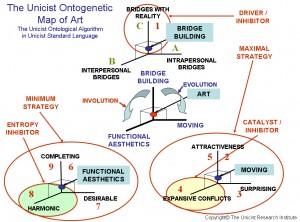CNN recently had a story about “What the Brain Draws from: Art and Neuroscience”. This can be found here:
http://www.cnn.com/2012/09/15/health/art-brain-mind/index.html?hpt=hp_c2
They begin with the following quote from Pablo Picasso, “We all know that Art is not truth. Art is a lie that makes us realize truth, at least the truth that is given us to understand. The artist must know the manner whereby to convince others of the truthfulness of his lies.”
The actual nature of art is related in the following excerpt from The Path of the Architect, by Peter Belohlavek:
“The final objective of art is to build a bridge with reality. To do so, it becomes necessary to build both intrapersonal bridges, that aim to solve individual conflicts, and interpersonal bridges that aim to solve those conflicts that deal with relations among individuals.
Art exists in action, because it “moves” people. The moving function is defined by the capacity of being attractive which implies having intrinsic and extrinsic conditions to generate a gravitational force to attract people (e.g. the name of the artist).
Surprise is the active function of art. Every piece of art or artistic action requires having some unexpected aspects. But this surprise factor needs to generate positive attraction, while going beyond the boundaries of what is expected.
Surprise generates conflicts that need to be solved in an expansive way. Expansion implies a way towards evolutions. The conflicts that art needs to solve are complementation, innovation and negotiation conflicts.
Finally, art needs to be aesthetic. Aesthetics is the energy conservation function of art. Aesthetics in a “piece of art” is defined by its capacity to complete the needs of the “user”, being desirable and harmonic.
Synthesis
An architect needs to have a superior level of consciousness which allows him/her to introject the needs of the user, the characteristics of the object that is being built and the possibilities of the specific environment to be able to integrate science and technology.”

